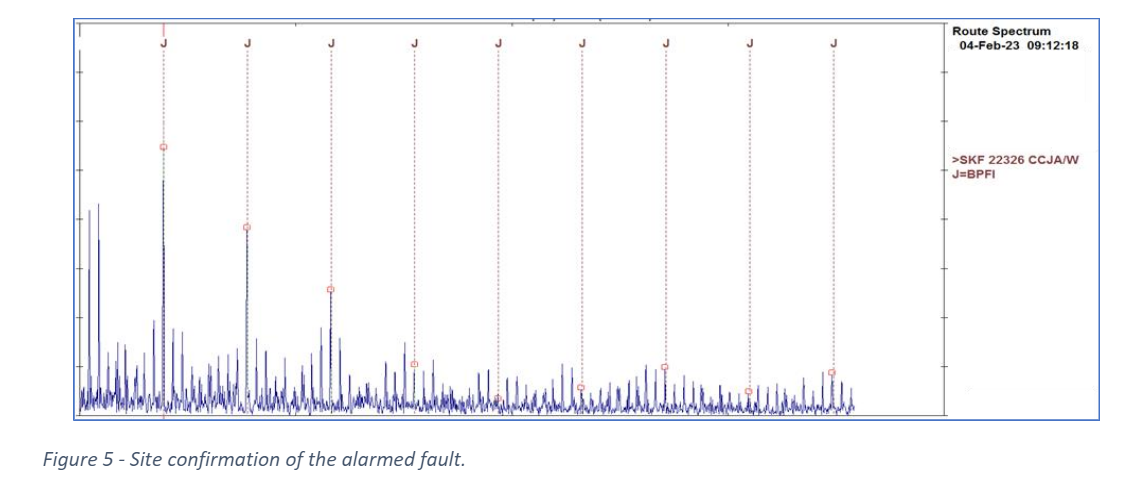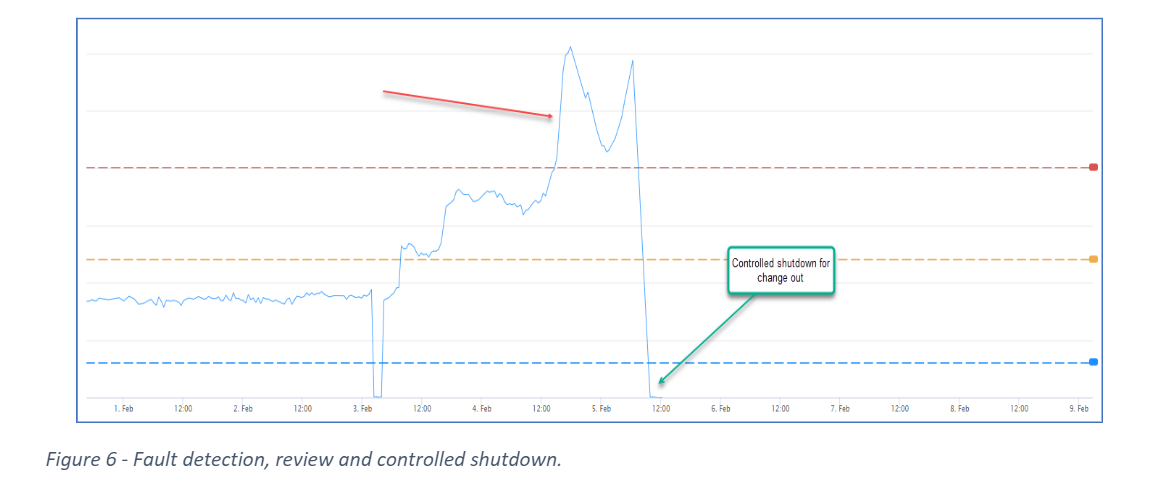An iron ore mining client in Western Australia was experiencing repeated failures on their vibrating exciters. These failures had resulted in production losses and were a health and safety hazard.
The site strategy for monitoring the screens was to use vibration analysis. To do so, the clients historically used hard-wired industrial piezoelectric accelerometers. A condition monitoring technician would then routinely (monthly or greater) manually collect vibration data onto a portable device and review the signals for signs and faults.
The original solution:
Increased frequency of the vibration analysis survey to weekly in order to provide earlier detection.
Whilst the vibration data collection and analysis method is proven to detect faults, there are three problems that make this method ineffective or unreliable for screen exciters.
1. The cable of the hard-wired sensors often fatigues due to the harsh environment (oscillating screen) which meant vibration data could not be collected.
2. A bearing can go from ‘normal’ to ‘severe’ condition within days. When failures do occur, they are normally catastrophic destroying shafts, gears, weights and exciter cases. Given the nature of the rate of deterioration, even a fault detected early on in its failure mode, a routine survey would need a very high frequency of measurements to provide an accurate report of the assets’ health to operations/maintenance.
3. Weekly inspections are demanding on vital condition monitoring human resources.
All of the above problems meant a labour intensive, seven-day inspection routine was unsatisfactory for plant reliability and personnel safety.
With the above challenges being a constant source of concern, the client engaged GVS Reliability Products and installed the Waites Wireless online condition monitoring system. This overcame the challenges of collecting higher frequency, important asset health data, was a cable free solution and did not require a technician to walk around and manually collect the data.
To the customer, this meant overcoming all three challenges listed above.
The below case study highlights the versatility of moving to wireless technology, which ultimately proved its worth in detecting both the initial fault and the rapidness of the failure, preventing significant secondary damage and reducing down-time.
Case Study
The Waites Wireless SM1-1150 motes were installed one on each exciter across a few screens to monitor and detect the signs of early bearing faults. Exciter temperatures, acceleration and velocity levels were trended and time waveform and FFT data were captured and stored in the cloud for ease of access and analysis. The Waites Wireless ‘ImpactVUE’ feature was also utilised for the early bearing fault and impact detection ability.

The trends of the exciters (see below – Figure 2), show the steady operation with acceleration levels for over three months. Over this period the alarm sets were tailor-made to suit the machine and its operating condition at the site.

A few months after an outage in December, the trend of the drive-end exciter can be seen slowly increasing (see below – Figure 3). In early February, the hourly acceleration readings on the screen exciter began to spike breaching alarm levels. At the triggering of the ‘caution’ alarm, Waites Wireless automatically sent notifications to the Condition Monitoring team.

The triggering of the ‘caution’ alarm gave the onsite Condition Monitoring Team the chance to inspect the asset, diagnose the issue and provide early notice to the Operation Team of the fault and machine condition.
The Waites Wireless ‘ImpactVUE’ FFT shows (see below – Figure 4) the inner race fault frequencies clearly defined.

The site team used their onsite data collector which clearly showed similar data to the Waites Wireless platform (see below – Figure 5).

Shortly after this data was collected, the vibration amplitudes dramatically increased, and the decision was made to shut the screen and plant down (see below- Figure 6).
By neutralizing the threat, secondary damage to other components was avoided, greatly reducing the costs of the rebuild/repair. While the failure was fast moving, Waites Wireless provided sufficient time for maintenance to be organised with necessary parts, prior to the shut-down. By giving time for maintenance to be organised and ready, Waites reduced the overall downtime and the financial impact to the company of this impending failure.

Two days later, another completely different screen monitored by Waites Wireless hardware, sent their condition monitoring team alarms that indicated similar signs of rapid failure while the other screen was under maintenance. The trend increased dramatically on the 4th of February (see below – Figure 7).

The Waites Wireless condition monitoring system was able to prevent catastrophic secondary damage on two screens in quick succession. This success story is achieved for the customer by the intelligent use of Waites Wireless high frequency data sampling intervals and a good practical alarm set configuration.
Reach out to your local GVS Reliability Products representative via sales@gvsensors.com.au for more information on how to easily monitor your own vibrating screens (and other rotating equipment) with the Waites Wireless condition monitoring hardware.